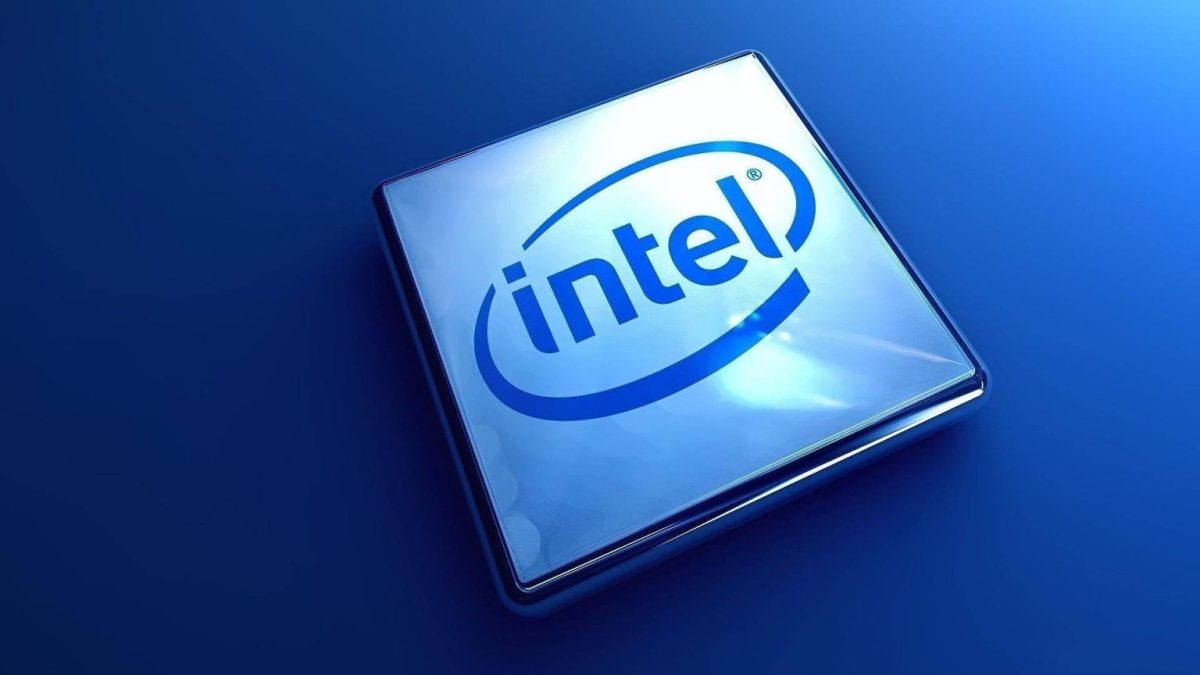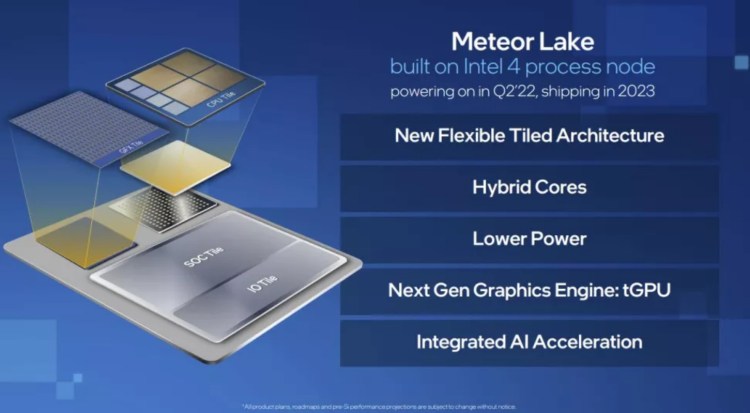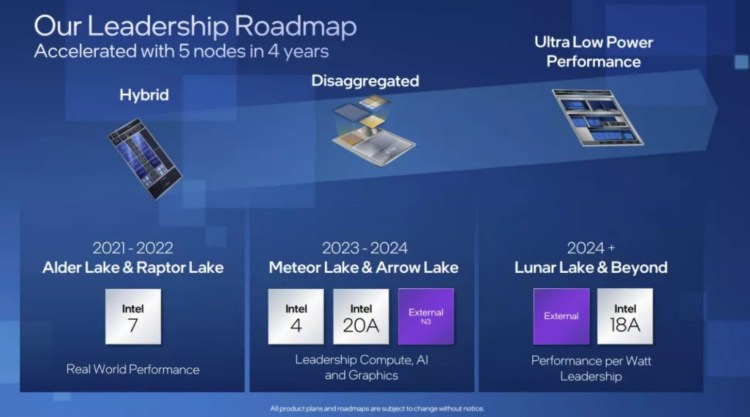Intel unveiled a Meteor Lake die earlier today at the 2022 IEEE VLSI Symposium, as reported via Tom’s Hardware. The reveal was accompanied by details regarding the 14th gen Meteor Lake CPU architecture and Intel’s new “Intel 4” 7nm node which promises big technical improvements to performance and efficiency. Alongside this, the company also revealed a roadmap that illustrates when we can expect to see future generations of process technologies and CPUs.
It’s clear that Intel is trying to compete against AMD in a big way with this announcement. Just last week, AMD revealed its own roadmap for Zen 4 and Zen 5 CPUs, along with some teases for what we can expect in the future. Regardless of whether you prefer Intel or AMD, it’s clear that both companies have plans for consistent, large performance gains gen-over-gen for the next few years. Meteor Lake will mark the next big stride for Intel.
Say hello to the Intel 4 node
With Meteor Lake, Intel will use the new denser node to replace the previous generation’s “Intel 7” 10nm node. The company claims that its Intel 4 node is capable of 21.5% higher frequencies at the same amount of power as Intel 7. An alternative configuration would be a 40% power reduction for equivalent performance. The Intel 4 node also has double the transistor density.
If we look at Alder Lake as a direct example, this suggests an Intel 4 version of the i9-12900KS could reach a blistering 6.6GHz boost clock, up from 5.5GHz on Intel 10. However, this is simply a mathematical translation of Intel’s claim and does not represent any future products. Meteor Lake will also be a different CPU architecture, so it’s important to remember that IPC, cache, frequency, and many other factors contribute to overall performance.
Just like Alder Lake, these new CPUs will share the same x86 hybrid architecture. But unlike Alder Lake, it will use a 7nm node instead of the 10nm used by the 12th generation CPUs. The example of the Meteor Lake CPU shown at Intel’s presentation had six p-cores and eight e-cores. Beyond the general construction of the CPU, Intel didn’t share specifics.
Instead, Intel kept it simple and confirmed that Meteor Lake will use a new “flexible tiled architecture, hybrid cores, lower power, next gen graphics engine: tGPU, and integrated AI acceleration.”
As far as the roadmap goes, it’s about as vague as AMD’s was last week. Alder Lake and Raptor Lake are shown in the 2021-2022 segment. Meteor Lake and Arrow Lake fall into 2023-2024, and Lunar Lake is shown for 2024.
The roadmap also lists an Intel 20A node for Meteor Lake and Arrow Lake CPUs, as well as an 18A node for Lunar Lake. These will launch in what Intel calls the “Angstrom era.” But before we get there, the company will launch the “Intel 3” node. Intel also stated that the Intel 4 node will be forward compatible with its successor and faster by 18%.
Looking forward to
Intel shows potential for significantly raising performance in little time with its future generation CPUs. With the Intel 4 node, we may see some massive gaming performance uplifts. In order to find out more though, we’ll need to wait a little while to see how it actually plays out. Intel’s Meteor Lake CPU lineup is set to enter the market sometime in 2023. Let’s not get too ahead of ourselves though, as there’s still Raptor Lake 13th gen CPUs to look forward to later this year. In fact, a recent leak suggests we may see Raptor Lake CPUs launch in September, along with a decent performance boost over Alder Lake.









Published: Jun 13, 2022 06:00 pm